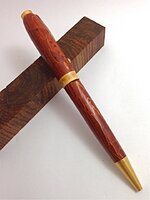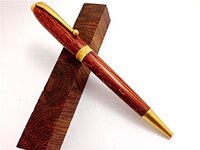Most wood/tree bark is buoyant so, it won't sink, and it doesn't sink, doesn't take any water/liquids so, stabilizing under vacuum doesn't work as it does with normal softwoods and CA has limited effect on the soaking, you have to use the super thin CA (5cup) to get "some" penetration.
This small amount of penetration can be very useful when, you are turning the blank and soaking every time you reach soft material (better if just before reaching the soft stuff) so, slow process. Using a "flap disk", you will be able to control the amount of material you are taking and you can wait just before the final size to start soaking the blank with CA, and continue on with the hand sanding stages...!
Remember that, trees grow bark as the first stage of their defence, against wood eating creatures, sun expose and water/weather protection, this is the reason why they are buoyant, being water proof/resistant will maintain the wood from rot and fungi growth, something that will happen immediately (to a certain degree depending of the tree species) so, expect to have difficulty to soak pine bark, regardless tom what you use...!
A good thickness of CA as finish, is one of the best options to protect and maintain the material looking good for a long time, a good floor varnish can be as effective but, not as easy to apply as multiple coating/layers however, dipping, brushing or spraying, the floor varnish can be sanded and polish the same way as the common CA finish...!
Hope this makes sense to you...!

Cheers
George


